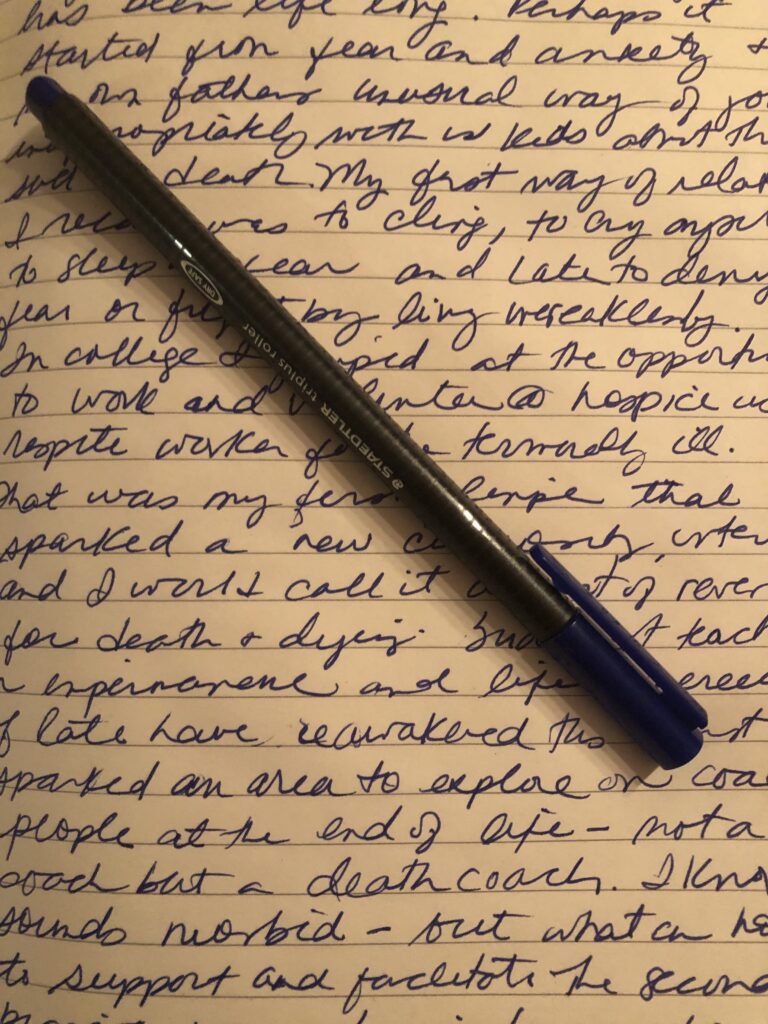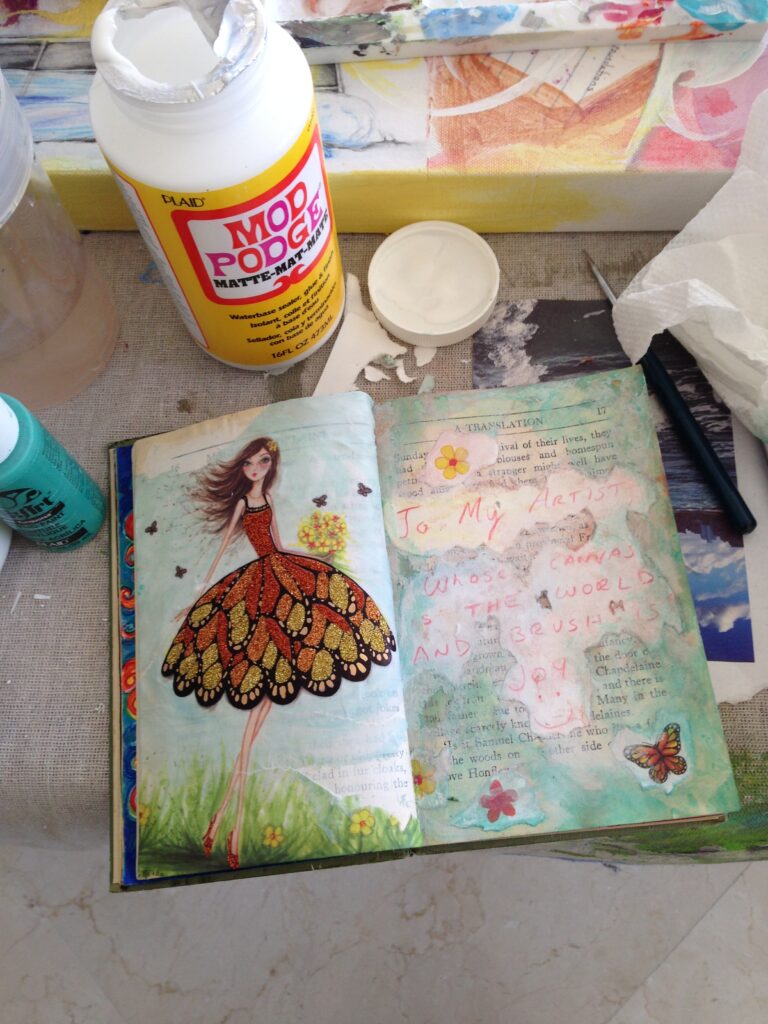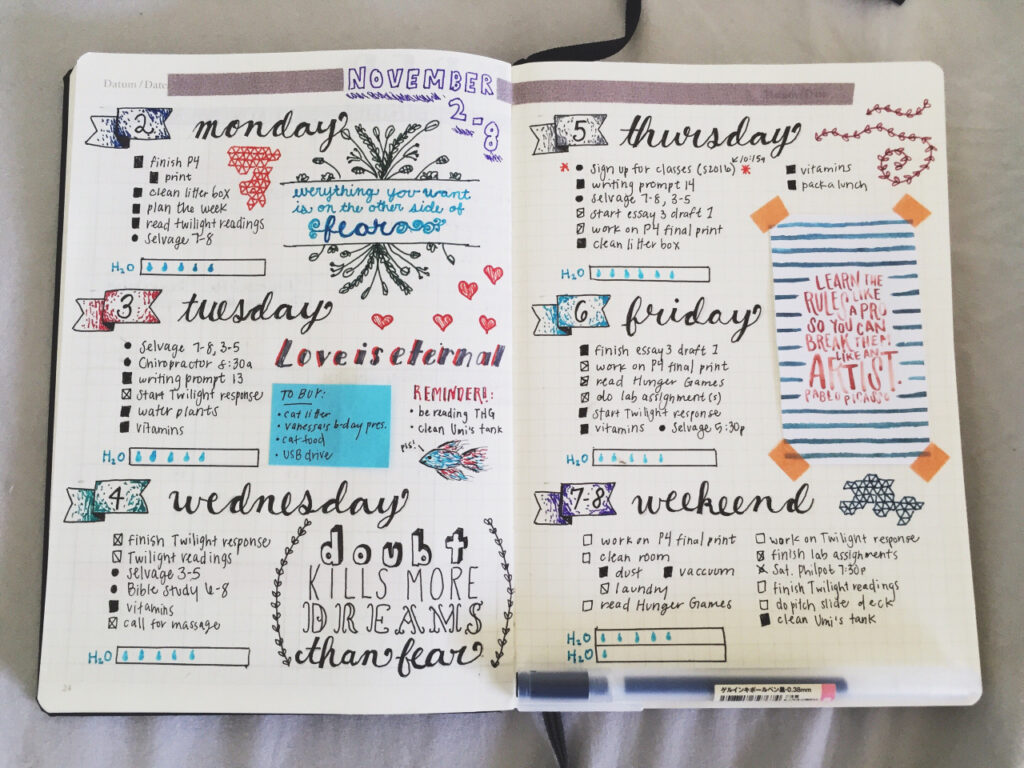There are many healing modalities used to release pain and suffering and improve mental health, including psychotherapy, group therapy, skills training, somatic or body-based approaches, movement, expressive art, bibliotherapy, narrative therapy and journaling. It has been my experience that when people combine two or more methods, they often expedite the healing process; and along the way discover powerful tools to maintain mental, physical, and emotional health. Throughout my own journey, I started journals at the beginning of each year as a way to capture my experiences, dreams, and goals. It is quite remarkable to revisit my past journals. I find so much consistency in my vision and goals throughout the years and can see how they have manifested into my Life Worth Living (LWL).
Don’t stop reading just because you don’t like to journal – stay with me and see the possibilities.
My yearly journals were not an attempt to manifest my LWL, yet I can see now how they contributed to setting my course, correcting my course at times, and recognizing and overcoming the limiting beliefs and obstacles that obstructed my way.
Often when people hear the word “journal” they tend to fall into two main categories. First the resistant nay-sayers who express the dislike of writing or fear of exposing their thoughts on paper. On the other side are people who are excited and inspired, ready with pen and paper in hand, bursting with thoughts and images. And yes, there are those in between like me who have mixed feelings about journaling but are willing to explore it’s uses and benefits. What I have discovered through opening to the process is the vast array of choices available to use “journaling” as an instrument of self-awareness, healing, and expression.
Here are some ideas and tips on starting a journal that can benefit you this year.
7 of my favorite Journal Themes:
A Mindfulness Journal (one of my favorites) can be used daily or weekly as a place to capture the moment, like a photograph. Your direct, personal experience is the lens that captures the moment and remains aware and awake to the way it is perceived, held, and processed. My own journals kept on each of my silent retreats reveals an ever-changing perspective, perhaps the practices of mindfulness have helped to reshape, and in many ways expand my ability to see more clearly. Subscribe here for 52 weeks of inspiration and join me on a year of mindfulness exploration and journaling. https://sacredtreehouse.org
A Thought Journal is helpful to bring greater awareness to the top ten thoughts that dominate our lives and give you an opportunity to explore, challenge, and even release the ones that are not true or maintain self-destructiveness.
An Emotion Journal can be used to build greater attunement to the flow of emotions in daily life and the impact they have on our thoughts, actions, and other emotions. The greater our attunement and emotional vocabulary the greater our emotional IQ and, in turn, the greater our ability to self-regulate these emotions and be resilient in times of distress.
A Gratitude Journal can help us shift attention to the simple things we are grateful for. When we leave the mind on auto-pilot all day, it will tend to see the negatives as a basic survival strategy, so training the mind to find the positives, note them, appreciate them, and celebrate them (even if it is in your private journal) will balance our emotional state by focusing attention on what brings joy, contentment, happiness, and love. This daily journal cultivates a habit that takes on a life of its own, no longer requiring the pen and paper activity, it just becomes part of life.
A Dream Book is used to set and express your desired Life Worth Living goals. It can be used to track progress or setbacks, and work through the various ups and downs that naturally come throughout our journey.
A simple Daily Journal captures (or organizes) the thoughts, feelings, ideas, and experiences you have each day. People often use this type of journal in the evening as a form of planning and organizing and/or reflecting and releasing the day. It can also be a way to identify what might be hidden from the conscious mind and yet become activated during sleep and sometimes even prevent sleep.
The Morning Pages Journal, popularized by Julia Cameron, author of The Artist’s Way, is a morning free flow, stream of consciousness of just 3 pages daily, as a way to prime the pump of creativity and get in the flow without any particular purpose or expected outcome. The best part of this is you don’t have to be an artist to benefit from morning pages. You can gain greater clarity, focus, and direction at the start of each day.
Here are some popular styles of journaling:

A traditional Pen and Notebook Journal is used for morning pages, evening journaling or even the dreams and goals.

A Mixed Media Journal that combines, written words, drawings, painting, and even collaging. I love the videos about mixed media journals on youtube from Unexpected Gypsy. Check them out here- Unexpected Gypsy YouTube
If you are interested in doing an online art journal class through the Sacred Treehouse, email me at- drpatty@sacredtreehouse.com.

Bullet Journaling is a simple, minimalist way to keep several forms of journal information in one place and serves to keep one organized, focused, and clear in their daily work and home life. Click here for a guide to Bullet Journaling.

